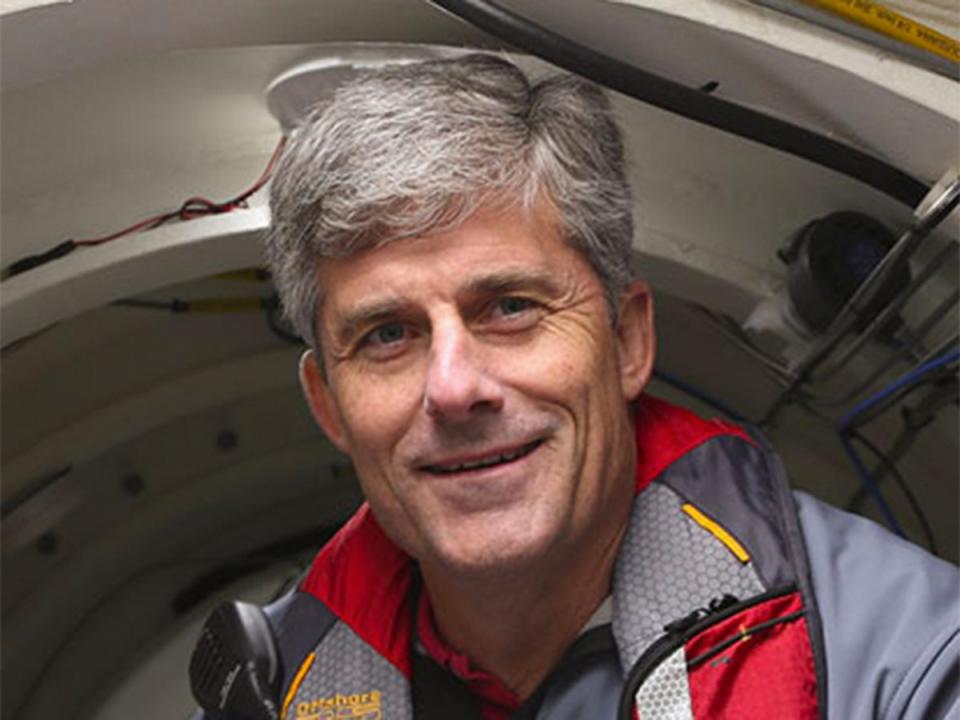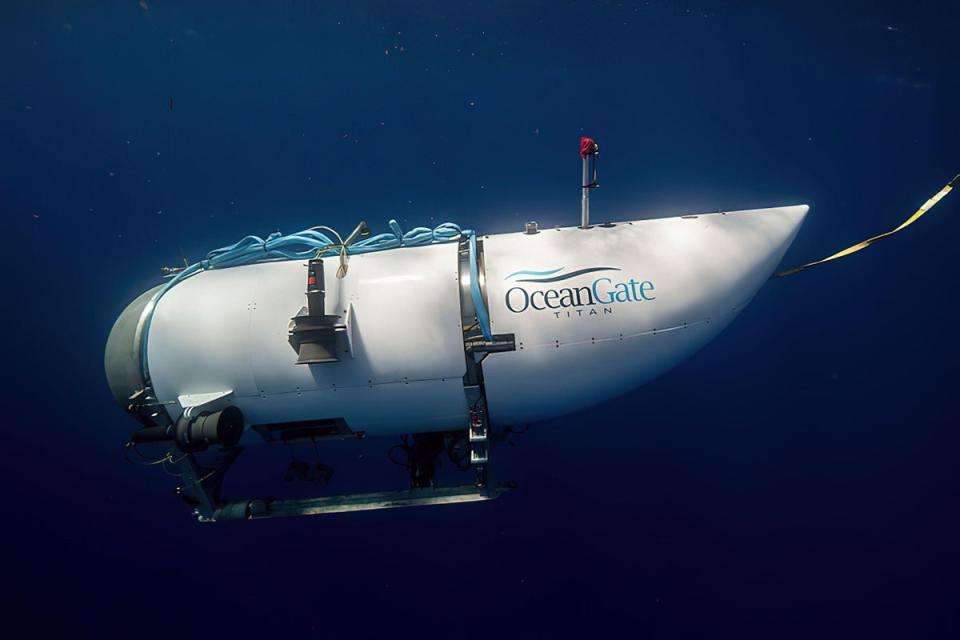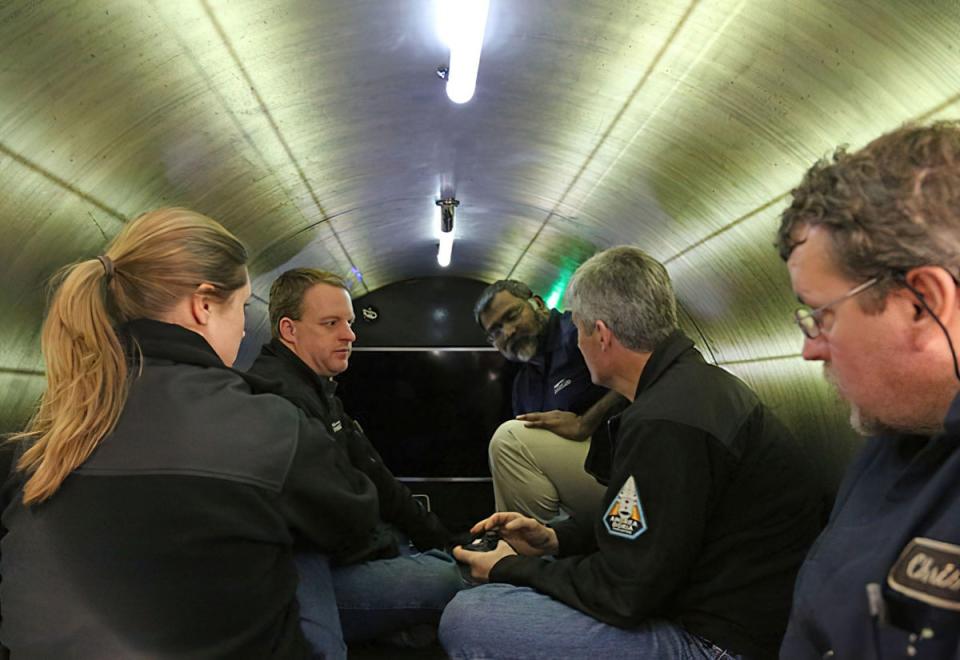Who is Stockton Rush? The OceanGate CEO missing in Titanic tourist submarine
Stockton Rush, the CEO and founder of OceanGate Expeditions, is believed to have been aboard his company’s Titan submarine that disappeared on Sunday en route to the wreck of HMS Titanic around 370 miles east of the coast of Newfoundland, Canada.
The US and Canadian Coast Guards are currently taking part in an attempted rescue mission to recover the craft, which takes fee-paying tourists and scientists 12,500 feet down into the depths of the Atlantic to see the disintegrating ruin of the famous luxury ocean liner, which struck an iceberg on its maiden voyage from Southampton to New York City on 15 April 1912, subsequently splitting in two and sinking, killing all but 700 of the 2,200 guests and crew on board.
Also understood to be on the missing OceanGate vessel are British billionaire explorer Hamish Harding, renowned French diver Paul-Henri Nargeolet, Pakistani businessman Shahzada Dawood and the latter’s son, Sulaiman Dawood.
The Titan is a cramped 22-feet long cylinder with a aerospace-grade carbon fibre hull capped with titanium hemispheres at each end, boasting a massive viewport window and 4K cameras to relay the marine environment outside back to those within but is otherwise sparse indeed.
Follow the latest updates on the missing Titanic submarine here.

Astonishingly, the craft is controlled by a generic video games controller – specifically a Logitech F710 Wireless PC Gamepad from 2011, according to gaming expert Matthew Ruddle – and, rather than using a GPS for navigation, it communicates with a tracking team aboard a surface ship, in this case the Canadian icebreaker the Polar Prince, via text messages.
According to Stockton Rush’s biography on his company’s website, he graduated from Princeton University with a BSE in aerospace, aeronautical and astronautical engineering in 1984 and later from UC Berkeley Haas School of Business with an MBA in 1989.
He began his career as a pilot, qualifying from the United Airlines Jet Training Institute in 1981 at the age of 19 and serving as a DC-8 first officer on flights to Europe and the Middle East during his summers between college.
In the year he left Princeton, Mr Rush joined the McDonnell Douglas Corporation as a flight test engineer on its F-15 program, spending two years at Edwards Air Force Base on its APG-63 radar test and anti-missile programs.
In the year he left UC Berkeley, he personally built a Glasair III experimental aircraft, which he still owns and flies, and subsequently constructed a heavily-modified Kittredge K-350 two-man submarine, in which he has conducted more than 30 dives.

Between 2003 and 2007 he served on the Museum of Flight’s Board of Trustees in Seattle, Washington, also chairing the institution’s Development Committee for a year during his tenure.
He founded OceanGate Expeditions in 2009 – the company based in Everett, Washington – and the non-profit OceanGate Foundation in 2012 while also sitting on the board of BlueView Technologies, a manufacturer of high-frequency sonar systems that acquired subsea tech developer Teledyne in 2012.
Mr Rush has also served on the board of enterprise software company Entomo and as chairman of Remote Control Technology, whose clients include Exxon, Conoco-Philips and Boeing.
The missing man was interviewed about his Titan sub on a CBS Sunday Morning featurette last November and cheerily emphasised its “homemade” aspects, also pointing out handles affixed to the ceiling of the craft that he said he had bought from Camper World but denied that the vessel has been “MacGyvered” or “jerry-rigged”.
“I don’t know if I’d use that description of it. But, there are certain things that you want to be buttoned down,” Mr Stock told reporter David Pogue.
“The pressure vessel is not MacGyver at all, because that’s where we worked with Boeing and Nasa and the University of Washington. Everything else can fail, your thrusters can go, your lights can go. You’re still going to be safe.”
Mr Rush was also interviewed by Mr Pogue for the latter’s Unsung Science podcast that same month on which he was asked what he worried about at the depths of the ocean and answered: “What I worry about most are things that will stop me from being able to get to the surface. Overhangs, fish nets, entanglement hazards.”

On the safety of his missions more generally, he said: “I don’t think it’s very dangerous. If you look at submersible activity over the last three decades, there hasn’t even been a major injury, let alone a fatality. What worries us is not once you’re underwater.
“What worries me is when I’m getting you there, when you’re on the ship in icy states with big doors that can crush your hands and people who may not have the best balance who fall down, bang their head. That’s, to me, the dangerous part.”
Perhaps most revealingly of all, he added: “You know, at some point, safety just is pure waste. I mean, if you just want to be safe, don’t get out of bed. Don’t get in your car. Don’t do anything.”
Mr Rush also spoke to the BBC last year to promote his lucrative Titanic tours venture, which costs customers $250,000 (£195,000) per trip, telling viewers that deep sea travel “is amazing. It’s just such a different experience. It’s a totally different emotion”.
Explaining the appeal of pursuing the ghostly wreck of the doomed liner in particular, he said simply: “I read an article that said there are three words in the English language which are known throughout the planet. That’s Coca-Cola, God and Titanic.”

